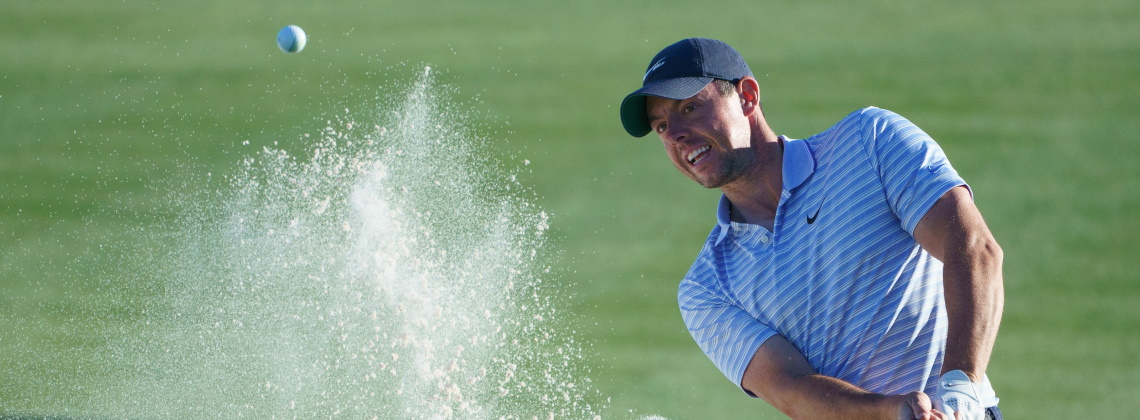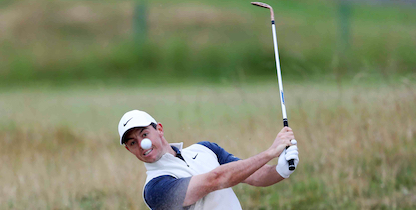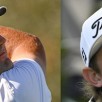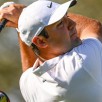
Can the likes of McIlroy keep up with golf's youth movement?
Brian Keogh
4 February 2022
Professional golf has always had its young Turks but was a game that was almost exclusively the preserve of the grizzled veterans, who served their time, grinding on their games until they hit maturity in their mid-thirties and started to make a real mark on the game.
Not any more.
The average age of the top three players in the Official World Golf Ranking today is just 25 with John Rahm the old man of the group at 27 compared to 24-year-olds Collin Morikawa and Viktor Hovland.
The average age of the world's top 16 has also dropped considerably over the past five years from 33 to 28.7 and the top 20 now average 29.2.
Apart from the aforementioned top-three, Sam Burns and Scottie Scheffler are 25, Justin Thomas, Bryson DeChambeau, Cameron Smith, Jordan Spieth and Daniel Berger are 28, while FedEx Cup champion Patrick Cantlay and Masters champion Hideki Matsuyama are only 29.
That's not to say that the end is nigh for 37-year-old Dustin Johnson, 39-year-old Louis Oosthuizen or Brooks Koepka, Tony Finau, Rory McIlroy, Harris English or Abraham Ancer, who are all in their early thirties.
However, the trend has been ongoing for the best part of a decade due to the Tiger Woods effect.
The Tiger Effect
Woods' spectacular power game not only drew more eyeballs to TV screens when he burst on the scene in 1997, but it also showed youngsters who dreamed of careers in football, American football or basketball that golf was a cool, athletic game where you could make millions of dollars.
When McIlroy won the US Open in 2011 and went on to win two PGA Championships and an Open Championship in the following three years, there was talk of him matching Jack Nicklaus' haul of 18 major titles.
Given his advantage off the tee, players of the stature of three-time major champion Pádraig Harrington believed the pride of Holywood, Co Down could realistically aspire to winning 18 majors.
But Harrington had a caveat.
"If he putts okay, he's going to be right there," Harrington said in 2014. "But with the kids coming out of college now, in five to 10 years' time there are going to be a lot of players like that."
In 2014, McIlroy topped the PGA Tour statistics for strokes gained off the tee with 1.367. That was fully 0.4 strokes per round better than second-ranked Bubba Watson. But by 2021 McIlroy was giving up two full strokes per tournament off the tee to DeChambeau.
"At the moment, he has the ability to go into the next number of majors as the favourite for a long number of years," Harrington said eight years ago. "But in time - and Tiger looked invincible for such a long time - the kids in college now are going to learn from Rory and come out with similar games.
"So if Rory is to get to high numbers [in major wins], it is the next number of years that will determine it. The more years where he wins two or three majors - remember Tiger had four in 12 calendar months - that's how you get to 14.
"Time is on his side, but in ten years' time, his rate might slow down to one every two years. Tiger had that advantage and it's been eaten up now. And Rory's advantage will be eaten up in time too.
"He is young and he's got time to win more majors, but the more he wins, the quicker, the better. There might be three players like him now; in 10 years, there might be 15."
It might be a coincidence, but McIlroy has now gone more than seven years without a major win and US college golf continues to produce big-hitting youngsters with the same fearlessness, if not quite the same talent, as the Northern Irishman.
Not only have Rahm, Morikawa and Hovland come on the scene, but we also have DeChambeau, Sam Burns, Matthew Wolff, Joaquin Niemann and last year's Masters runner-up, Will Zalatoris.

McIlroy is looking to keep pace with next generation
New technology
With the advent of Trackman and other launch monitors such as the GCQuad, young players have access to more sophisticated information about the swing and the game than ever before.
They now build their course management plans, not from years of experience but by using software designed to help maximise their strengths.
It's a numbers game now, and they play the percentages with coaches like Scott Fawcett, who works with the likes of DeChambeau and Zalatoris, creating course management systems that have become hugely popular with players of all ages, not just the young guns.
Fawcett read Mark Broadie's book, "Every Shot Counts" and started considering the importance of strategy, creating spreadsheets combining shot patterns and expectations to come up with a system that Dechambeau says has helped him "understand the percentages of going for flags and when not to."
Players are getting bigger, stronger and more athletic and coupled with the new equipment and advances in technology, even players of McIlroy's unquestionable talent are finding it harder to compete.
Brian Keogh
4 February 2022


